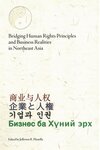This was a class action by social activists and NGOs responding to the gang rape of a social worker. The Court looked to international law and designed rules to combat sexual harassment: ''Any International Convention not inconsistent with the fundamental right and in harmony with its spirit must be read into these provisions to enlarge the meaning and content thereof, to promote the object of the constitutional guarantee.'' Thus, in India, in the absence of domestic law, gender equality should be interpreted in light of international conventions and norms. The Court looked to CEDAW when it said that ''[g]ender equality includes protection from sexual harassment and the right to work with dignity.'' The Court then drafted a detailed sexual harassment code and imposed a duty on employers (ostensibly both public and private) to prevent sexual harassment in the workplace and to provide a grievance option for employees.
For these above cases, the Supreme Court of India relied on international law and saw the issue of gender violence as an equality issue. It found that freedom from gender violence was a constitutionally protected right.
(found in ''Women and Law: A Comparative Analysis of the United States and Indian Supreme Courts' Equality Jurisprudence'' by Eileen Kaufman, Georgia Journal of International and Comparative Law, Vol. 34, No. 3, pp. 560, 609-613)








Leave a comment